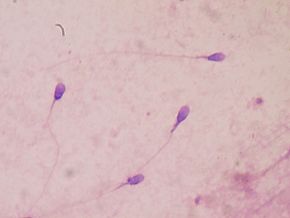This exciting new research is just the beginning knowledge about our virome (the virus community within us). Note that they only looked at viruses in a few areas of our bodies - the rest is still a mystery. But note that it is normal for healthy individuals to carry viruses, and that we have "distinct viral fingerprints". We don't know if the viruses are beneficial or not to us at this time. From Science Daily:
Healthy humans make nice homes for viruses
The same viruses that make us sick can take up residence in and on the human body without provoking a sneeze, cough or other troublesome symptom, according to new research. On average, healthy individuals carry about five types of viruses on their bodies, the researchers report. The study is the first comprehensive analysis to describe the diversity of viruses in healthy people.
The research was conducted as part of the Human Microbiome Project, a major initiative funded by the National Institutes of Health (NIH) that largely has focused on cataloging the body's bacterial ecosystems. ..."Lots of people have asked whether there is a viral counterpart, and we haven't had a clear answer. But now we know there is a normal viral flora, and it's rich and complex."
In 102 healthy young adults ages 18 to 40, the researchers sampled up to five body habitats: nose, skin, mouth, stool and vagina. The study's subjects were nearly evenly split by gender.
At least one virus was detected in 92 percent of the people sampled, and some individuals harbored 10 to 15 viruses...."We only sampled up to five body sites in each person and would expect to see many more viruses if we had sampled the entire body."
Scientists led by George Weinstock, PhD, at Washington University's Genome Institute, sequenced the DNA of the viruses recovered from the body, finding that each individual had a distinct viral fingerprint. (Weinstock is now at The Jackson Laboratory in Connecticut.) About half of people were sampled at two or three points in time, and the researchers noted that some of the viruses established stable, low-level infections.
The researchers don't know yet whether the viruses have a positive or negative effect on overall health but speculate that in some cases, they may keep the immune system primed to respond to dangerous pathogens while in others, lingering viruses increase the risk of disease.
Study volunteers were screened carefully to confirm they were healthy and did not have symptoms of acute infection. They also could not have been diagnosed in the past two years with human papillomavirus infection (HPV), which can cause cervical and throat cancer, or have an active genital herpes infection.
Analyzing the samples, the scientists found seven families of viruses, including strains of herpes viruses that are not sexually transmitted. For example, herpesvirus 6 or herpesvirus 7 was found in 98 percent of individuals sampled from the mouth. Certain strains of papillomaviruses were found in about 75 percent of skin samples and 50 percent of samples from the nose. Novel strains of the virus were found in both sites.
Not surprisingly, the vagina was dominated by papillomaviruses, with 38 percent of female subjects carrying such strains. Some of the women harbored certain high-risk strains that increase the risk of cervical cancer. These strains were more common in women with communities of vaginal bacteria that had lower levels of Lactobacillus and an increase in bacteria such as Gardnerella, which is associated with bacterial vaginosis.
Adenoviruses, the viruses that cause the common cold and pneumonia, also were common at many sites in the body.
 Over the past decade there has been as increasing amount of research suggesting that the herpes virus (cold sores!) is implicated in the development of Alzheimer's disease. (here, here, here).
Over the past decade there has been as increasing amount of research suggesting that the herpes virus (cold sores!) is implicated in the development of Alzheimer's disease. (here, here, here).
 Are we heading toward a time in the not so distant future when all men are infertile? (Due to exposure to all the endocrine disruptors around us.)
Are we heading toward a time in the not so distant future when all men are infertile? (Due to exposure to all the endocrine disruptors around us.)  Type 2 Diabetes May Be Reversed With Weight Loss
Type 2 Diabetes May Be Reversed With Weight Loss More and more evidence is accumulating that certain diets are anti-inflammatory. Especially beneficial are diets rich in fruits, vegetables, seeds, nuts, legumes (beans), and whole grains - which also have a lot of fiber. This is exciting research because chronic low-grade inflammation is linked to a number of chronic diseases (heart disease, cancer, etc.).
More and more evidence is accumulating that certain diets are anti-inflammatory. Especially beneficial are diets rich in fruits, vegetables, seeds, nuts, legumes (beans), and whole grains - which also have a lot of fiber. This is exciting research because chronic low-grade inflammation is linked to a number of chronic diseases (heart disease, cancer, etc.).